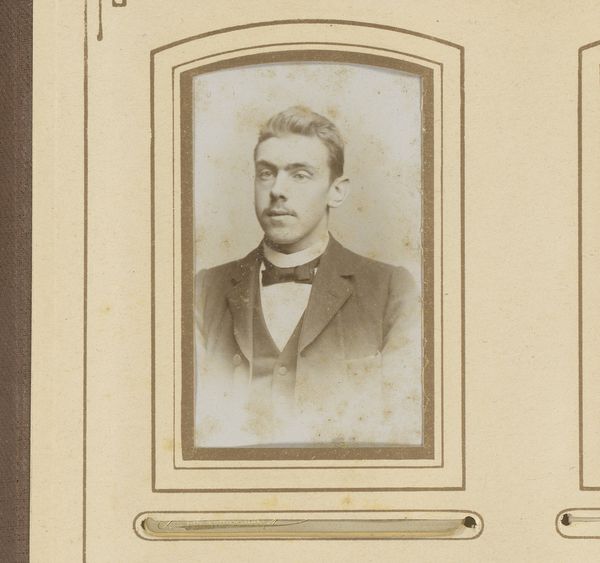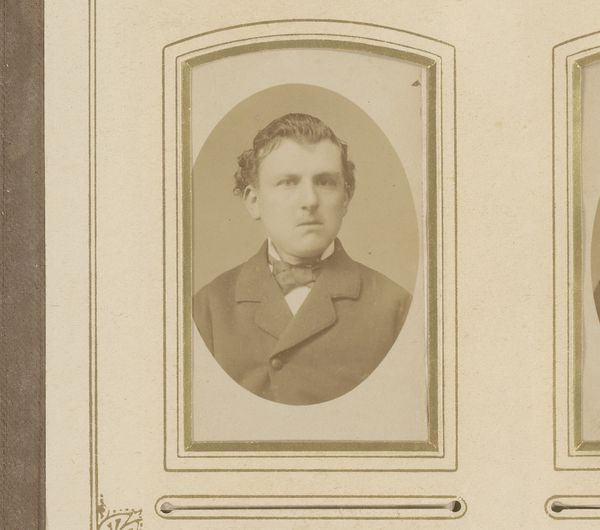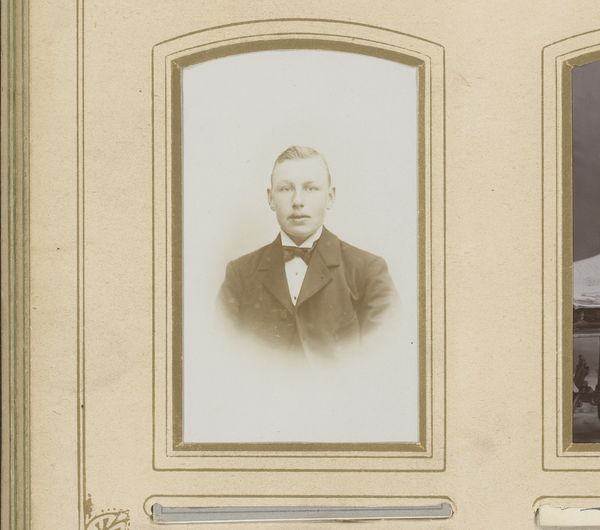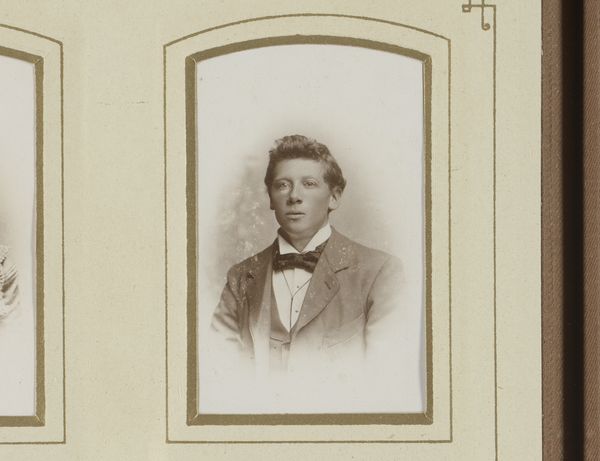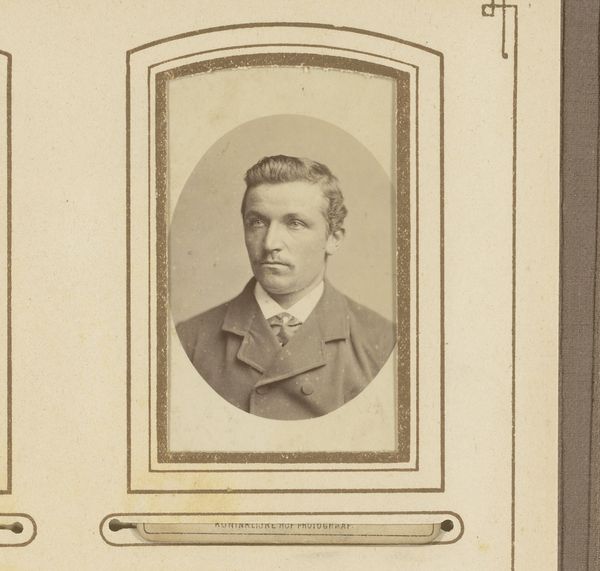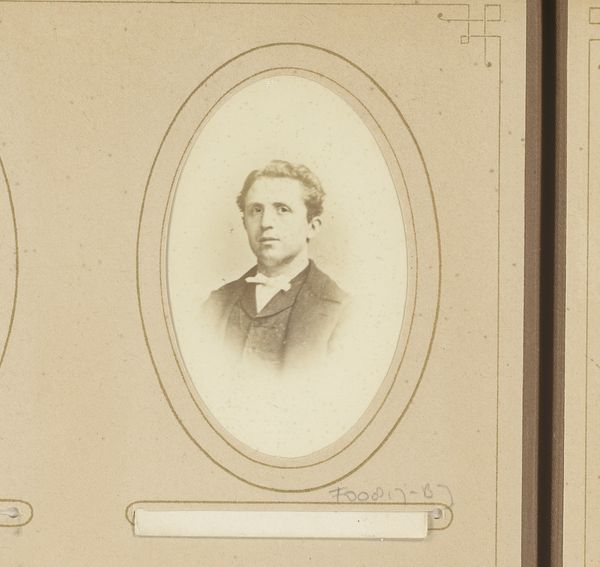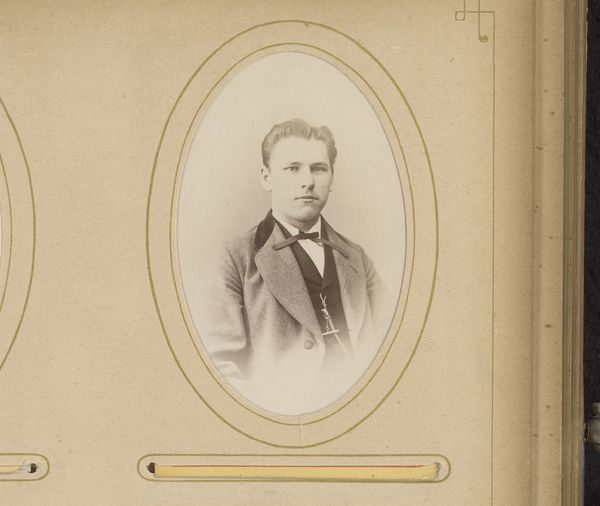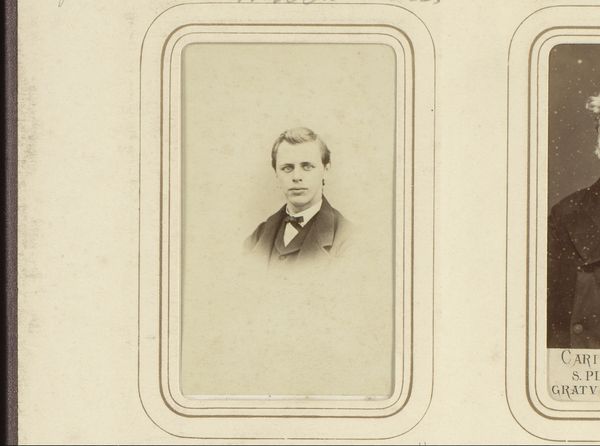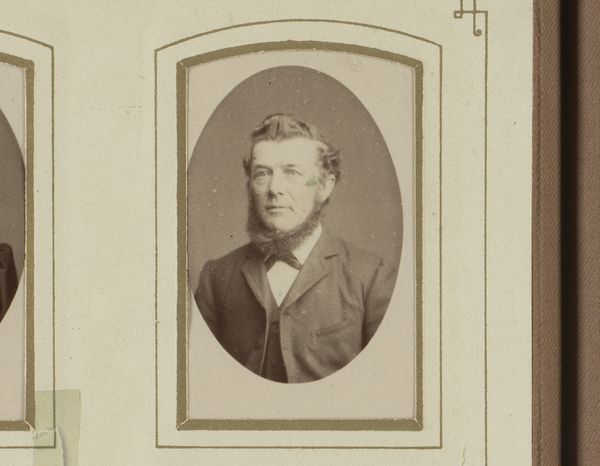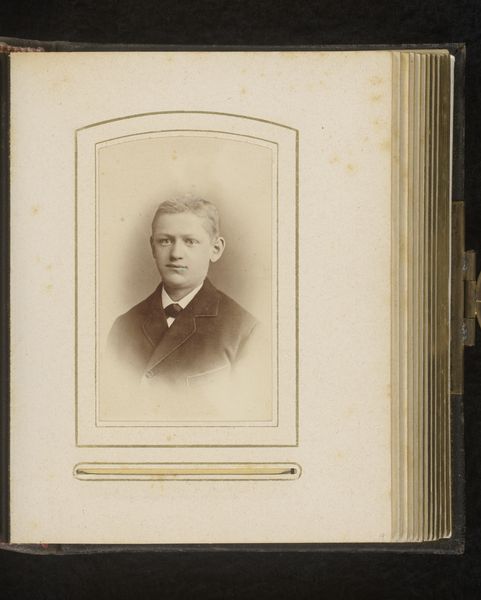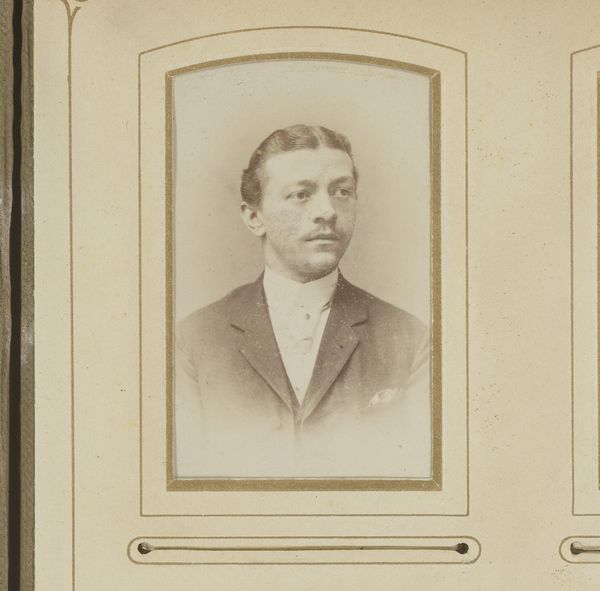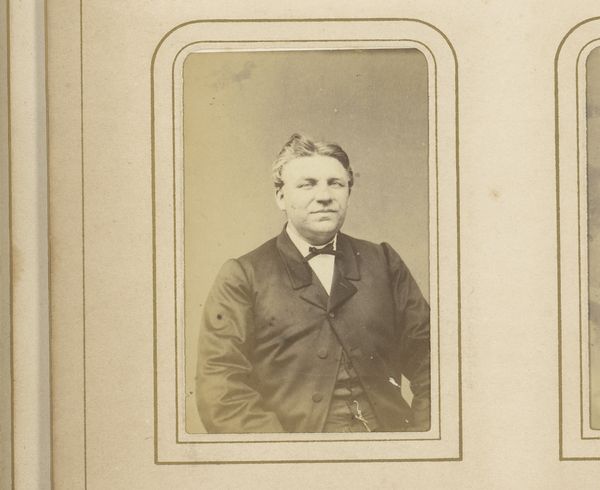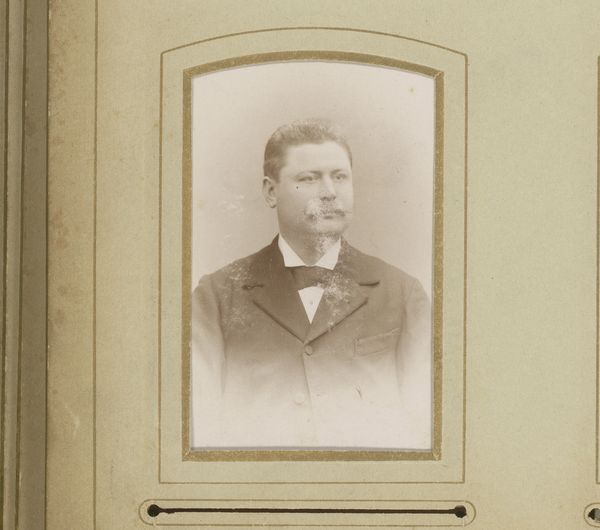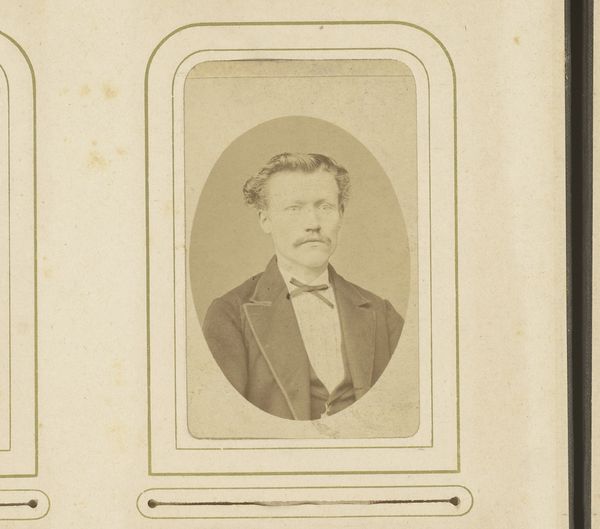
photography, gelatin-silver-print
#
portrait
#
photography
#
gelatin-silver-print
#
realism
Dimensions: height 82 mm, width 51 mm
Copyright: Rijks Museum: Open Domain
Editor: Here we have "Portrait of a Man with Beard and Bow Tie," a gelatin-silver print, dating sometime between 1862 and 1899, currently held at the Rijksmuseum. The photographer is Willem Gerhardus Kuijer. I'm struck by how...ordinary this man looks, yet there's something undeniably compelling about his gaze. What catches your eye when you look at this portrait? Curator: Ah, yes, ordinary is a word, isn't it? But what *is* ordinary, really? To me, this isn’t just a man; it’s a phantom limb of a lost age, captured in silver. His unflinching stare reminds me of my grandfather... though not physically. There's a stoicism there, a weight. Do you see that too? I mean, beyond the surface realism, the sharp detail... Editor: I see the stoicism, definitely. The framing and the formal pose make it seem like he wanted to project an image of respectability. But underneath, there is something vaguely disquieting, almost… melancholy. What can you tell me about the cultural context surrounding photographic portraiture at this time? Curator: Think about it. Photography was becoming more accessible, sure, but it was still a profound act. To sit for a portrait was a statement. These early photographic portraits often echoed painted portraits. They became accessible ways to assert a new middle class. What secrets, do you think, he hid behind his formal demeanor? And is photography good at capturing that? Or at masking? Editor: It’s strange to consider it now. The very act of being photographed meant something very different than it does today. I wonder, was this part of a collection or some other series of work? How does that information shape our perception of it today, when displayed individually? Curator: Oh, those little contexts are everything, aren’t they? That detail might give him back some context and even help shape the story that could live outside his world. To exist in a series creates conversations and gives his "ordinariness" a special characteristic within the greater whole. It changes *his* perspective. Maybe he isn't melancholy. Just... waiting. Editor: Food for thought! Thank you for opening my eyes to a few layers I may have missed! Curator: My pleasure. Remember, sometimes the ordinary is just a mask for something extraordinary.
Comments
No comments
Be the first to comment and join the conversation on the ultimate creative platform.
